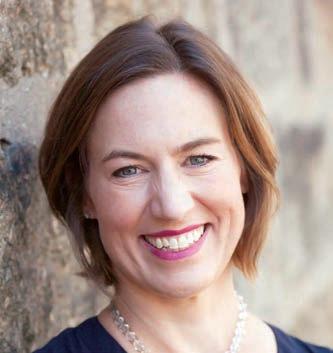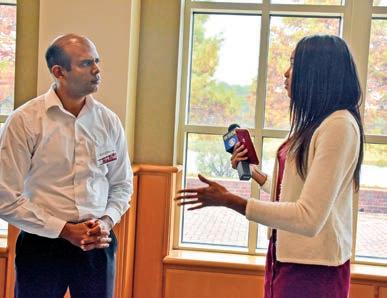
19 minute read
Extension
4-H STEM Education
Over the past year, some 2,500 grade school students and educators throughout Somerset, Wicomico, and Worcester counties benefitted from programming provided by UMES Extension’s 4-H STEM faculty. Youth, ages 5-18, participated in hands-on, research-based projects and activities in science, health, agriculture, and citizenship in a positive environment. The 4-H STEM faculty also trained other educators to offer programs utilizing the experiential learning and targeting life skills models.
Educators in UMES’ 4-H STEM program, Bradley Hartle (Wicomico County) and Lisa Murphy (Worcester County), worked closely with public and private schools and boards of education in their respective counties. A sampling of school-based programs include: inschool enrichment such as vermicomposting in the classr oom, the STREAM Afterschool Program, the Summer Scientist Academy, the AgDiscovery Summer Program, and STEM Saturdays.
Activities designed to spark STEM interest in young minds included: learning about shark biology by handling a preserved specimen; dissecting squid and worms to learn about internal and external anatomy; extracting DNA from a strawberry to learn the importance of our genetic code; learning about edible insects and the field of entomology; experiencing physics principles such as projectile motion by building paper, straw, and stomp rockets; learning engineering concepts by taking part in building bridges, towers, and paper pop up books; building beginning robotics concepts through LEGO WeDo Robotics; learning about sustainable innovations by studying nature’s structures and functions; and discussing climate change and human involvement.
They also strengthened partnerships with over 30 local organizations who work with youth programming such as Future Farmers of America, the Ward Museum, Assateague and Pocomoke state parks (Meaningful Watershed Education Experience), and Maryland Coastal Bays.
New programming like the 4-H Chesapeake Bay Adventures summer residential Tashe Williams, the Next Generation Scholar Program coordinator in Wicomico County for the Maryland Business Roundtable for Education, helps a summer camp participant identify organisms she found while snorkeling in the Chesapeake Bay as part of the 4-H Chesapeake Bay Adventures.
camp has helped cr eate new partnerships with entities like the Maryland Business Roundtable for Education’s Next Generation Scholars Program. Last summer in the camp’s first year, 20 youth were immersed in nature and STEM activities while exploring the northern end of the Chesapeake Bay.
Another new collaboration was formed with UMES’ School of Pharmacy as a result of its being awarded a 5-year, $1.3 million grant for a project: Drug Discovery and Biomedical Research Training Program for Underserved Minority Youth. The grant provides for a summer camp for Somerset County high school students where they gain biomedical lab training by pharmacy faculty and staff. Murphy trained the faculty on “The 4-H Way: Learn by Doing,” which demonstrated team building techniques and the application of the 4-H Experiential Learning Model through hands-on activities.
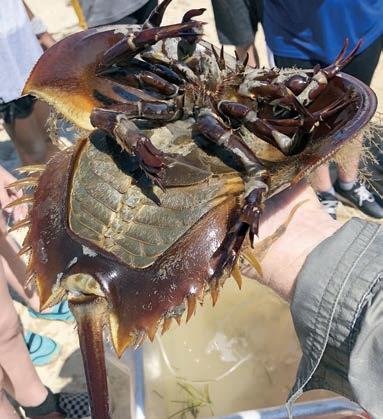
Sixth grade students in Worcester County learn about wetlands and animals living in the Maryland Coastal Bays as part of programming led by Assateague State Park’s Meaningful Watershed Educational Experience.
UMES School of Pharmacy faculty and graduate students participate in a team building activity building marsh mellow towers to learn how to teach using hands-on activities.

Agriculture Law Education Initiative

The Agriculture Law Education Initiative (ALEI), a University of Maryland: MPowering the State effort, was designated a University of Maryland Signature Program in 2019.
“The designation indicates that the program meets critical clientele needs; has a mixture of research, evaluation, and scholarship; and establishes public value,” said Nicole Cook, UMES’ environmental and agricultural faculty legal specialist with ALEI.
ALEI specialists reached nearly 3,000 people through 58 inperson presentations and webinars to Maryland farmers and agricultural service providers in 16 counties in Maryland and the City of Baltimore, along with six presentations nationally as invited talks, Cook reported. Topics ranged from food safety, pesticide drift liability, and farm succession to employee management, environmental regulation compliance, and direct farm marketing on social media.
One of the year’s highlights was an annual Agricultural and Environmental Law Conference organized by ALEI that attracted some 100 farmers, environmentalists, agricultural service providers, educators, governmental officials, attorneys and students, Cook said. Maryland farmers were also the focus of continuing education efforts addressing legal issues facing them, such as H-2A Farm Employer Compliance, Right-to-Farm law issues, and the Food Safety Modernization Act’s Produce Safety Rule. UMES received funding related to Cook’s Produce Safety Rule educational work from the Maryland Department of Agriculture.
A 3-year Northeast Sustainable Agriculture Research and Education Program grant allowed for an ALEI and University of Maryland Harry R. Hughes Center for Agro-Ecology series of workshops training 110 clientele on how a farm lease can be used to protect the leasing parties and support on-farm conservation practices.
ALEI continued to deliver estate planning education to Maryland farmers during the year and Cook collaborated with

Penn State Extension on a Legal Considerations for Social Media Marketing guide to help farmers promote their products directly to consumers without legal ramifications. Cook authored the chapter “Managing Legal Risks to Grow Your Urban Farm” for the UME online manual From Surviving To Thriving: Strategies For Urban Farm Success.
ALEI specialists continued to impact students and educators at the undergraduate, graduate, and law school levels; leveraging MPower funding with funding from the University of Maryland College Park (UMCP) Department of Agricultural and Resource Economics, UMES School of Agricultural and Natural Sciences, and the University of Maryland Francis King Carey School of Law. In addition, Cook and ALEI specialist Mayhah Suri presented in June 2019 at the Maryland 4-H Congress. The workshop introduced students to the policy-making process through a mock debate about an environmental rule that affected farmers. The students reflected on the importance of scientific information in policy development and the authority of government to legislate about the public good balanced with the importance of protecting individual rights.
For the third consecutive year, an undergraduate and a law student had the opportunity to live and work at the UMCP Wye Research and Education Center through the Russell Brinsfield Summer Internship Program funded through the Hughes Center. This program combines ALEI resources with funds leveraged from the Hughes Center to offer the students the chance to work on a variety of agricultural research and writing projects to benefit Maryland’s farmers.
Last year was Cook’s first full year with ALEI and as a result of having legal specialists at all three campuses, ALEI was able to provide substantially more education and outreach. Cook said she and her colleagues “are already working on reaching even more people in 2020 with expanded ways to learn about how the laws affect Maryland’s farming operations.”
Dixit makes strides in extension programs

Strides are being made in alternative and small-scale agriculture extension programs being undertaken by Dr. Naveen Kumar Dixit, assistant professor of horticulture and extension specialist and Maryland’s Northeast SARE coordinator.
Integrated programs focus on the rejuvenation of the fruit industry on the Eastern Shore of Maryland, once a six million poundper-year crop (apple production 1925 USDA census). A multi-variety apple orchard was established in 2017 at UMES for hands-on training for growers, beginning farmers, farm managers, stakeholders, state sustainable agriculture research and education coordinators, small farm program coordinators, nutrient management coordinators and extension associates. Interested parties can see the progression of the orchard from planting through initial productivity and harvesting. A $16,000 per year SARE grant enables Dixit to conduct four training workshops per year.
“This program is also empowering veterans by providing training for fruit cultivation in Maryland,” he said. “Two workshops were held since last spring at Therapeutic Alternatives of Maryland to train veterans.”
Dixit is looking to boost another fruit industry that once flourished on Delmarva: strawberries. One hundred years ago there were 5,260 strawberry farms in Maryland compared to 187 farms 7 years ago, 24 of which were local.
“There is an urgent need to extend the growing season of strawberries to enhance farm income, promote local produce, reduce carbon foot print and rejuvenate the lost strawberry legacy on the Eastern Shore,” Dixit said. A program, “Strawberry Season Extension Using Day Neutral Cultivars, High Tunnel, and Biochar on the Delmarva Peninsula,” aims to do just that. Dixit is the principal investigator on a $173,140 USDA-Evans Allen grant through 2021.
The strawberry industry is dominated by June-bearer, short day cultivars, which restrict the peak production to spring or early summer seasons in the Mid-Atlantic, he said. “There are no comprehensive studies nearby to evaluate the potential of multiple day DNS in open bed and low tunnel regimes to accelerate the local production and extend the season. Strawberry research and extension has enormous potential in the Tri-County area to promote local strawberry

production with the leadership of UMES and UME.”
Dixit is also a Co-PI on a $10,000 ICTAS Diversity Proposal grant with Virginia Tech titled, “Enhancing Learning, Research and Collaborations among Berry Programs,” through 2021.
Nanotechnology is also being used in another of Dixit’s programs for sustainable soybean production with biotic and abiotic stresses. Soybean, a dominant crop in Maryland, occupies more than 515,000 acres with a net contribution of $173 million to the state economy, he said. Substantial yield losses can occur due to the plant’s susceptibility to pests and pathogens.
The project involves the use of nano-technological approaches to control soybean insects and fungal diseases in Maryland. “We will use nano-clay, nano-zinc oxide, and their combinations in potted soybean plants in greenhouse and field conditions to generate data,” Dixit said. “Successful outcomes of these nano-particles will reduce environmental pollution and open potential avenues for the cultivation of organic soybeans, which are in demand for raising organic chickens.”
Also with Virginia Tech, Dixit is a Co-PI on a $20,000 grant titled, “Phosphate Reclamation in the Mid-Atlantic: an ICTAS Diversity Proposal” through 2021. The objective, he said, is to build a research partnership between the two institutions located in the Mid-Atlantic, a region in which phosphorus pollution in the form of inorganic phosphate (Pi) is an environmental issue.
Dixit’s lab and the lab of Virginia Tech biochemist Dr. Virginia Gillaspy will transfer an artificial gene cassette that has enhanced Pi accumulating abilities into pennycress, a cover crop being developed for biofuel production. “The ability of Pi accumulating pennycress will be evaluated in Pi-polluted soil here at UMES,” Dixit said. “Eventually, Pi-accumulating pennycress could be used to simultaneously remediate soil Pi, provide soil stability as a cover crop, and the seed oil could be harvested for biofuel.”
As part of a $65,000 Robert Wood Johnson Foundation Grant, “Well Connected Communities: Culture of Health in the Tri-County area of the lower Eastern Shore of Maryland,” Dixit established four community orchards (Fruitland, Eden, Princess Anne and Stockton) this year.
Culture of Health Initiative Impact Well Connected Communities (WCC)

The Well Connected Communities (WCC) project is a Robert Wood Johnson Foundation Culture of Health Initiative. On the Lower Eastern Shore of Maryland, the Project’s aim was to engage three communities (Fruitland, Pocomoke, and Princess Anne-Eden) in implementing a culture of health.
Each of the three communities conducted a health needs assessment and then developed and implemented an action plan. As a result, a coalition-building and a multi-sector health council was initiated to foster cross-sector collaboration with the goal of improving each community’s well-being. Approximately 250 youth, 50 adults, 12 community-based organizations, seven businesses, and eight government agencies were involved in the project. Under the leadership of youth and adults alike, three projects were implemented: Healthy Street-Healthy Me, Make Fruits Available to All, and Reading and Group Therapy Garden.

Through the collaborative efforts of the WCC project, a farmers market policy was voted and passed in Fruitland, one of the selected communities. In addition, approximately five miniorchards, including three at three different Head Start centers, were developed. The mini-orchards changed the educational environment at the selected centers, and in approximately 2 years, diverse fruits will be available in all three centers as well as in the Fruitland City Park and the Lower Shore Shelter, which spans the three communities.
A multi-sector health council is a critical step in engaging a community and in
initiating a collaborative decisionmaking process. More importantly, empowering the community may lead to more positive and sustainable health behavior changes and may move all involved toward achieving health equity within the selected groups of people.
Most people recognize hibiscus as a tropical plant with beautiful bright blossoms, but little do they know of its importance as a crop. Dr. Nadine Burton, an alternative crop specialist at UMES’ Education and Demonstration Farm, is researching the plant’s validity for local farmers.
Hibiscus, or Hibiscus sabdariffa as it is scientifically known, belongs to the Malvaceae family. There are over 300 species of annual or perennial herbs to the genus hibiscus. Hibiscus is rich in nutritive value and has been shown to possess phytochemical and pharmacological properties. It is very high in vitamin C and flavonoids and “is right up there with aronia and pomegranate with antioxidants,” Burton said. The calyx, or sepals of the flower that form a whorl that encloses the petals and forms a protective layer around a flower in bud, are used to make tea, juice, jams, and jellies. Burton said it can also be used in cosmetics such as shampoo and soap. In some countries, the leaves are an ingredient in stews and the stems have been used in making fishing nets.
Different countries have different names for hibiscus. It is commonly known in English speaking countries as roselle, hibiscus, and Jamaica sorrel, Burton said. In Arabic it is known as karkedeh, while in Thailand it is known as Krachiap daeng.
To date, 350 pounds of hibiscus seeds have been harvested from the 170 plants on the Demonstration Farm, Burton said. Planted outside in June, they were harvested in September and October. This is the first time in 3 years that the current variety has grown well, Burton said. The plants require 13 hours of sunlight before the calyx forms.
The Mid-Atlantic “adopted” variety, as it is being renamed, is a “high value-added property.” One quart of drink is made from ½ lb. fresh calyx and can give three 12-ounce bottles, which carries a market value of $7, Burton said. The UMES research is not for profit, but to introduce to local farmers and the agriculture community. Four major clients currently use UMES’ processed hibiscus: Black Narrows Brewery in Chincoteague, Va., for its beer; Shore Gourmet (Roxanne Wolf) in Denton, Md., for its kombucha tea; Habanera Farms, LLC in Tyaskin, Md., for its herbal teas; and for research by Corrie Cotton, an assistant research professor at UMES. Farmers that are interested are also given seeds and seedlings with which to experiment. Burton shows them different techniques to maximize their growing space and still produce a high yield.
Harvesting is a labor intensive process. First the calyxes are plucked from the plants. Seeds are hand removed with an apple corer. After seeds are removed, they are washed with Tsunami five percent concentration. They are then spread to dry and finally are freeze dried in a USDA-approved system. Studies have shown that no nutrients are lost in freezing, Burton said.
The UMES Education and Demonstration Farm is “gearing up to be a kitchen to help farmers process and package hibiscus.” Currently, our farmers’ products are not in a condition for long shelf life. Processed and packaged correctly, the seeds can be kept for 3 to 4 years. Extension
“When Dr. Nadine Burton pops by the brewery, it’s always special. Her tireless efforts at UMES’ Department of Agriculture, Food and Resource Sciences are paving the way for local farmers to find small scale valueadded crops to buffet income in the face of an ever-changing climate. Crops like this beautiful hibiscus, destined for our 2nd Anniversary spontaneous collab with our friends at Bluejacket Brewery.”
Black Narrows Brewing, Chincoteague, Va. UMES Researcher Delves into Hibiscus Processing UMES Extension’s Michael Sigrist and Dr. Nadine Burton pay a visit to Black Narrows Brewing in Chincoteague, Va.
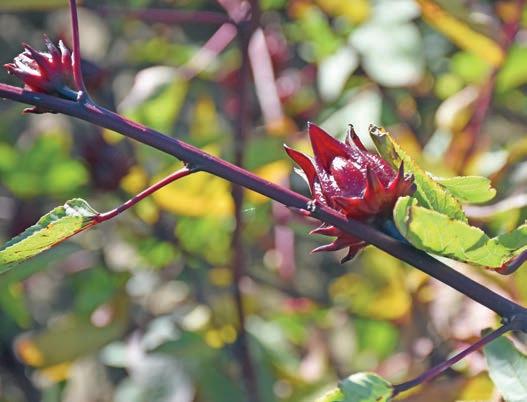

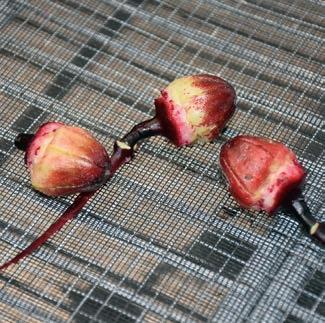
Extension Small Farm Program Reaches Maryland Farmers Through IFARMS Initiatives
Two years ago, the University of Maryland Eastern Shore’s Small Farm Program entered into a partnership agreement with the USDA to implement a special initiative entitled “Improving Farmers Access to Resources and Management Solutions (IFARMS).” As expressed in the very title, the overall goal is to expose farmers (particularly those classified as limited-resource and underserved) to a cadre of agricultural programs, services, and experiential learning activities designed to increase their ability to start and maintain successful agricultural businesses.
“In 2019, we centered our IFARMS efforts on strengthening farmers’ knowledge and skill-base in alternative crop production and sustainable farming practices and in how to become more business and market savvy,” reported Berran Rogers who serves as Small Farm Program coordinator. The following activities represent a summary of highlights and accomplishments made by the project team.
Helping farmers get off to a good start, the UMES Small Farm Program partnered with Delaware State University and National Crop Insurance Services by offering a three-part workshop series that trained 25 farmers on how to develop marketing plans and strategies for their farm business.
In response to an increasing interest in growing specialty herbs among small growers and gardeners, the UMES Small Farm Program collaborated with Habanera Farm in Tyaskin, Md., to establish a specialty herb demonstration garden introducing participants throughout the 2019 growing season to the cultivation and harvesting practices of select herbs, marketing opportunities, and to different types of value-added herb products. “As a result of workshops held, we have identified approximately 20 small farmers and gardeners interested in working with us on growing one or more specialty herbs,” Rogers said. “Through technical assistance and support, one African American beginning farmer growing hibiscus has already developed a market for his crop by selling value-added products.” On a hot summer day in July, approximately 60 visitors braved extreme temperatures to attend UMES’ 2nd annual Demonstration Farm Field Day. The purpose of the event was to introduce and educate participants about alternative crops along with appropriate production management practices. During the morning program, participants were split into small groups in order to walk from station-tostation gleaning information about growing specialty herbs, aronia, hops, callaloo, high tunnel vegetable production, honeybee production, and more. “Following informative exchanges, no one left emptyhanded, carrying a gift of fresh produce and herbs away with them,” Rogers said.
Rounding out the year on a high note, the UMES Small Farm Program celebrated their 16th annual Small Farm Conference in November. The 2019 conference, which attracted over 170 participants, has substantial impact on the small farm community, Rogers said. Demonstrations and tours took place on UMES’ Demonstration Farm and at a local orchard, while workshops conducted on canning, small flock poultry processing, and pasture rotation for sheep and goats were held simultaneously. Over the 2 days, informational sessions gave attendees the opportunity to learn more about the USDA Farm Bill, alternative agriculture, business and marketing, and resources for beginning farmers. Also, a networking session connected participants to a number of agricultural service providers from the government, public, and private sectors. Excited about what is to come, planning for next year’s conference is already underway!
“Overall, the IFARMS project has made significant gains by attracting new agricultural clientele and increased participation in meetings, workshops, and conferences,” Rogers said. “The University of Maryland Eastern Shore’s Small Farm Program will continue to build on the momentum generated as we expand our outreach efforts and support of limited-resource and underserved farmer audiences.”
Stay tuned, as they look forward to even greater service and outcomes in 2020! Warren Blue, owner and operator of The Greener Garden, an urban farm in Baltimore City, is pictured with UMES Small Farm Conference keynote speaker, Mike Beatty, director of the USDA Office of Partnerships and Public Engagement in Washington, D.C. Dr. Nadine Burton, alternative crop specialist with UMES Extension, shares the bounty of the UMES Education and Demonstration Farm with attendees of the 2019 Demonstration Farm Field Day.

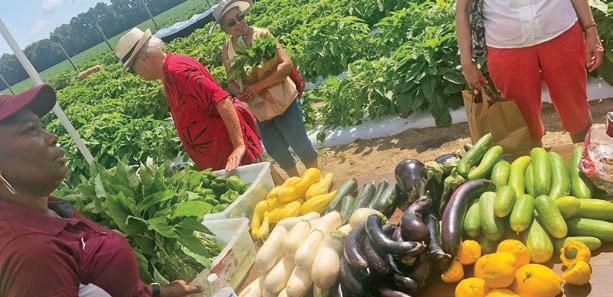
New Beginnings with SHEEP AND GOATS

Some 40 students, grades K-7, traveled from the New Beginnings Youth and Family Services Center in Cambridge, Md., to UMES for a quick visit. While on campus, they interacted with the sheep and goats that are managed by Dr. E. Nelson Escobar, small ruminant specialist and interim associate extension administrator.
The farm visit resulted from an invitation from Marilyn Buerkle, lecturer in the School of Education, Social Sciences and The Arts, who initially began coordinating the visit for Dr. Theresa Stafford, UMES alum and executive director of New Beginnings. It followed a tour of the radio and television facilities on the 1st and 3rd floors of the Engineering and Aviation Science Complex. To the excitement of the children and their chaperones, Leon Lewis and Bill Brophy, both digital media staff, served as gracious and informative hosts.
At the farm, Solomon Kirongo and Harry Taylor introduced the students to the sheep and the goats and to their peculiarities. After braving the “poop” and the skittish nature of the animals, and with some military-style encouragement from their director, the children soon became acclimated to their surroundings.
Committed to planning and developing educational, recreational, and cultural activities for afterschool and summer programs, Stafford made sure the children made the best of their time on campus. She also devotes her time to coordinating activities for families who live in subsidized housing.
Stafford is a retired Maryland supervisor of college and career readiness and has 37 years of experience in public education. She is

also retired from the Maryland Army National Guard. As a therapeutic foster care provider, she has provided 10 years of guidance for atrisk children. Finally, she is certified to offer training for Restorative Practices in Maryland and Delaware. Having successfully introduced her students to her alma mater and exposing them to technology and live animals, she expressed the desire to return next summer.
New Beginnings is one of many groups who regularly come to UMES to spend time with the animals at the UMES Small Ruminant Farm.
“Watching the children interact with the sheep and goats is one of the rewarding activities within my job,” said Escobar. “I think it is important for today’s youth to come face to face with nature and with food production livestock as often as possible. The interaction helps students of all ages to realize where food come from.”








